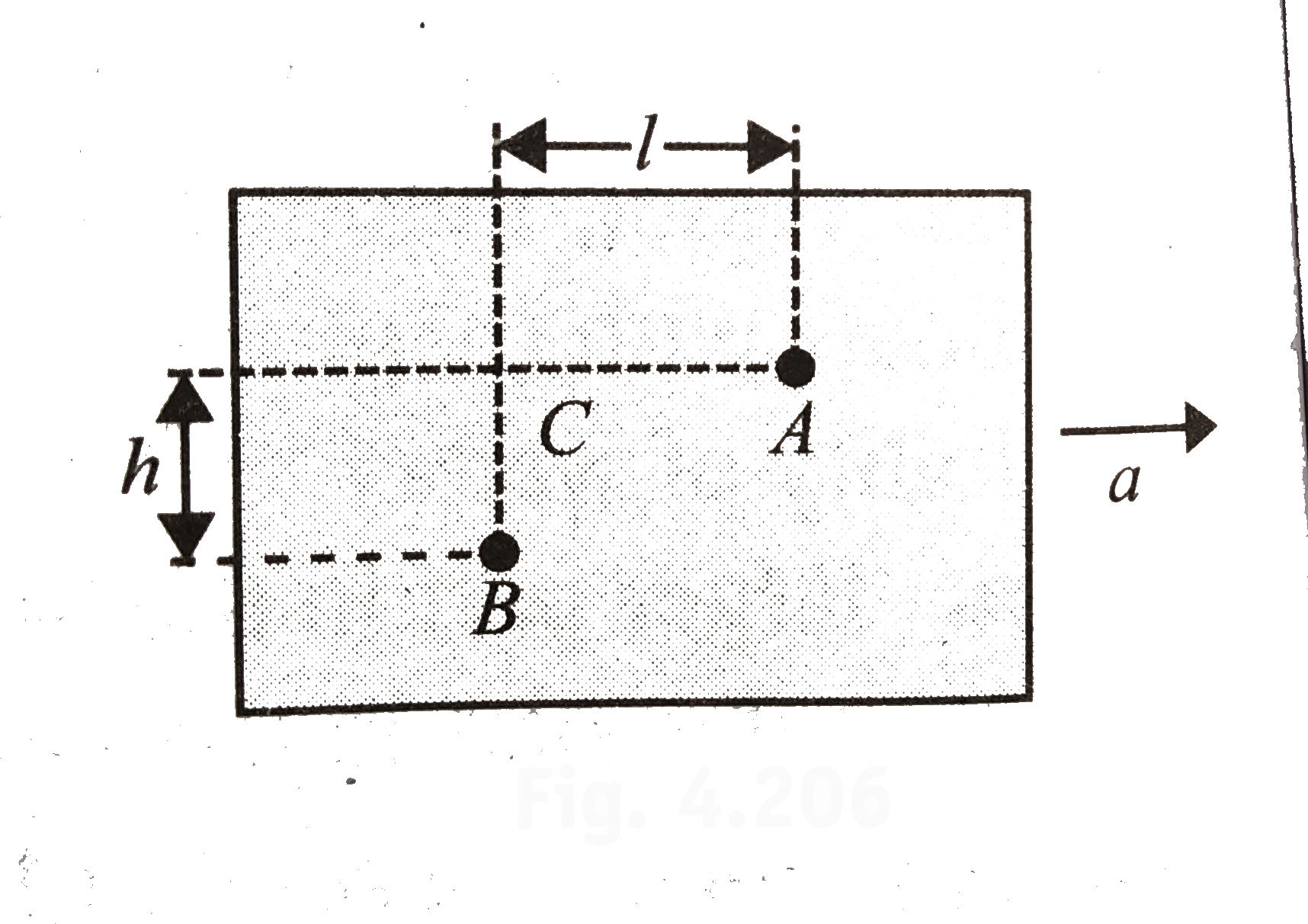A uniform rod of density ρ is placed in a wide tank containing a liquid of density ρ0(ρ0>ρ). The depth of liquid in the tank is half the length of the rod. The rod is in equilibrium, with its lower end resting on the bottom of the tank. In this position the rod makes an angle θ with the horizontal.
sinθ=12√ρ0/ρ
sinθ=12.ρ0ρ
sinθ=√ρ0/ρ
sinθ=ρ/ρ0
The correct Answer is:A
To solve the problem step by step, we will analyze the forces acting on the rod and apply the principles of equilibrium and torque.
Step 1: Understand the Setup
We have a uniform rod of density ρ placed in a liquid of density ρ0 (where ρ0>ρ). The depth of the liquid is half the length of the rod, which we denote as L/2 (where L is the length of the rod). The rod is in equilibrium, with its lower end resting on the bottom of the tank and making an angle θ with the horizontal.
Step 2: Identify Forces Acting on the Rod
1. Weight of the Rod (W): The weight of the rod can be calculated as:
W=ρ⋅V⋅g=ρ⋅A⋅L⋅g
where A is the cross-sectional area of the rod.
2. Buoyant Force (F_B): The buoyant force acting on the rod can be calculated using Archimedes' principle:
FB=ρ0⋅Vdisplaced⋅g=ρ0⋅A⋅(L/2)⋅g
Step 3: Set Up the Torque Equation
For the rod to be in equilibrium, the torque about any point must be zero. We can take torques about the point where the rod touches the bottom of the tank.
- The torque due to the weight of the rod (acting at its center of mass, which is at L/2):
τW=W⋅(L2cosθ)
- The torque due to the buoyant force (acting at the midpoint of the submerged part of the rod, which is at L/4):
τB=FB⋅(L4cosθ)
Step 4: Equate the Torques
Setting the torques equal for equilibrium:
W⋅(L2cosθ)=FB⋅(L4cosθ)
Substituting the expressions for W and FB:
(ρALg)⋅(L2cosθ)=(ρ0A⋅L2g)⋅(L4cosθ)
Step 5: Simplify the Equation
Canceling common terms:
ρL⋅L2=ρ0⋅L4
This simplifies to:
ρL=ρ02
Step 6: Solve for sinθ
From the equilibrium condition, we find:
sinθ=L/2L⋅√ρρ0=12√ρρ0
Final Answer
Thus, the angle θ can be expressed in terms of the densities:
sinθ=12√ρρ0
We have a uniform rod of density ρ placed in a liquid of density ρ0 (where ρ0>ρ). The depth of the liquid is half the length of the rod, which we denote as L/2 (where L is the length of the rod). The rod is in equilibrium, with its lower end resting on the bottom of the tank and making an angle θ with the horizontal.
1. Weight of the Rod (W): The weight of the rod can be calculated as:
W=ρ⋅V⋅g=ρ⋅A⋅L⋅g
where A is the cross-sectional area of the rod.
FB=ρ0⋅Vdisplaced⋅g=ρ0⋅A⋅(L/2)⋅g
For the rod to be in equilibrium, the torque about any point must be zero. We can take torques about the point where the rod touches the bottom of the tank.
τW=W⋅(L2cosθ)
τB=FB⋅(L4cosθ)
Setting the torques equal for equilibrium:
W⋅(L2cosθ)=FB⋅(L4cosθ)
(ρALg)⋅(L2cosθ)=(ρ0A⋅L2g)⋅(L4cosθ)
Canceling common terms:
ρL⋅L2=ρ0⋅L4
This simplifies to:
ρL=ρ02
From the equilibrium condition, we find:
sinθ=L/2L⋅√ρρ0=12√ρρ0
Thus, the angle θ can be expressed in terms of the densities:
sinθ=12√ρρ0
Topper's Solved these Questions
Similar Questions

Consider a rod of length l resting on a wall and the floor. If the velocity of the upper end of a rod A is v0 in downward direction, find the velocity of the lower end B at this iinstant, when the rod makes an angle θ with horizontal
View SolutionA body of density ρ is released gently on the surface of a layer of liquid of depth d and density ρ'(ρ'<ρ) . Show that it will reach the bottom of the liquid after a time.
[2dρg(ρ−ρ')]1/2 .
View Solution
Knowledge Check
A beaker containing a liquid of density ρ moves up with an acceleration a. The pressure due to the liquid at a depth h below the free surface of the liquid is.
AhρgBhρ(g+a)Chρ(g−a)D2hρg(g−ag+a)
A sealed tank containing a liquid of density ρ moves with a horizontal acceleration a, as shown in the figure. The difference in pressure between the points A and B isAhρgBlρaChρg−lρaDhρg+lρaA sealed tank containing a liquid of density ρ moves with horizontal acceleration a as shown in the figure. The difference in pressure between two points A and B will be
 AhρgBlρgChρg−lρaDhρg−lρa
AhρgBlρgChρg−lρaDhρg−lρa
A liquid of density ρ0 is filled in a wide tank to a height h. A solid rod of length L, cross-section A and density ρ is suspended freely in the tank. The lower end of the rod touches the base of the tank and h=L/n (where n gt 1). Then the angle of inclination θ of the rod with the horizontal in equilibrium position is
View SolutionA narrow U-tube placed on a horizontal surface contains two liquids of densities ρ1 and ρ2 . The columns of the liquids are indicated in the figure. The ratio ρ1ρ2 is equal to :

View SolutionA uniform rod of length L pivoted at the bottom of a pond of depth L/2 stays in stable equilibrium as shown in the figure.

Find the angle 0 if the density of the material of the rod is half of the density of water.
View SolutionA trolley containing a liquid slides down a smooth inclined plane of angle α with the horizontal. Find the angle of inclination θ of the free surface with the horizontal.

View SolutionThere are two holes, each of cross-sectional area a, on the oppisite side of a wide rectangular tank containing a liquid of density ρ. When the liquid flows out of the holes the net force on the tank is [h is the vertical distance between the two holes].
View Solution

